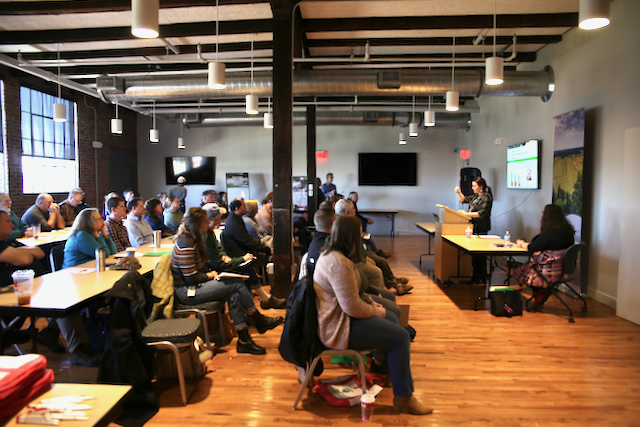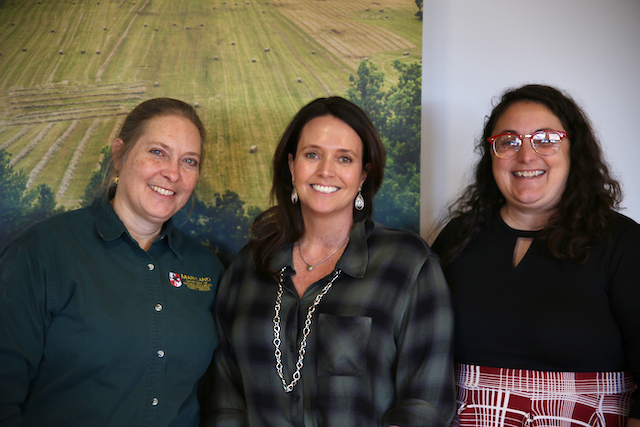Review: ESLC Forests and Forestry Workshop

Logging and forestry are commonly misconstrued as being more harmful than helpful to the environment. But this isn’t always the case. Last week’s forestry workshop hosted by ESLC showed the many ways that sustainable forestry in our state can positively benefit both the environment and the economy. Growth currently exceeds removal for Maryland’s forests. And Maryland’s forestry sector is ten times larger than the seafood sector, contributing $3.3 billion to the state economy.
ESLC’s “Forests and Forestry – Maintaining and Increasing Resilience” workshop took place at the Packing House in Cambridge with Maryland State Forester Anne Hairston-Strang kicking on a series of presentations that included Heather Disque (Forest Health Entomologist with Maryland Department of Natural Resources), Beth Hill (Executive Director of Maryland Forest Association), Jason Dubow (Manager, Resource Conservation & Management with the Maryland Department of Planning), and Charles Rice (Planning Director for Charles County). Researchers, foresters, local government staff, and landowners gathered together to learn about the many barriers that are preventing more sustainable forestry practices from being implemented, and how the misconceptions of forestry and logging create a negative image that prevents practices from being implemented on private and public land. Zoning and land use ordinances also restrict investments and growth within the economy.
The workshop also focused on the significant importance that sustainable forestry practices have on both the economy and the quality of conservation. Forests provide habitat, reduce runoff, and sequester carbon. Select cutting within forests (whether on land owned by the state or local governments or by private individuals) can provide local resources and economic benefits. Select cutting can also reduce stress on a forest by lowering competition for resources. This can increase a forest’s health and its ability to survive increased stresses from climate change such as pests, diseases, saltwater intrusion, droughts, and floods. Cutting can also open up seed banks and allow new growth, creating early successional habitat that is often missing on today’s Eastern Shore landscape. The carbon sequestered in a tree also remains in the wood once it is used in timber products. Even when burned, the release of carbon from wood does not have as negative an impact on the environment as the burning of fossil fuels.
For anyone interested in learning more, below are resources presented and discussed at the workshop.
- Forestry Guidance to Local Governments: https://planning.maryland.gov/Pages/OurWork/envr-planning/forest/forestry-guidance.aspx
- Hughes Center Report: https://agnr.umd.edu/technical-study-changes-forest-cover-and-tree-canopy-maryland
- Saltwater Intrusion Adaptation Plan: https://planning.maryland.gov/Documents/OurWork/envr-planning/2019-1212-Marylands-plan-to-adapt-to-saltwater-intrusion-and-salinization.pdf
- Options for Maryland’s Coastal Woodland Owners: https://extension.umd.edu/resource/losing-your-trees-sea-fs-2022-0645
- Maryland Forest Economic Adjustment Strategy: https://maryland-forestry-resources-salisburyu.hub.arcgis.com/pages/maryland-forest-economic-adjustment-strategy







